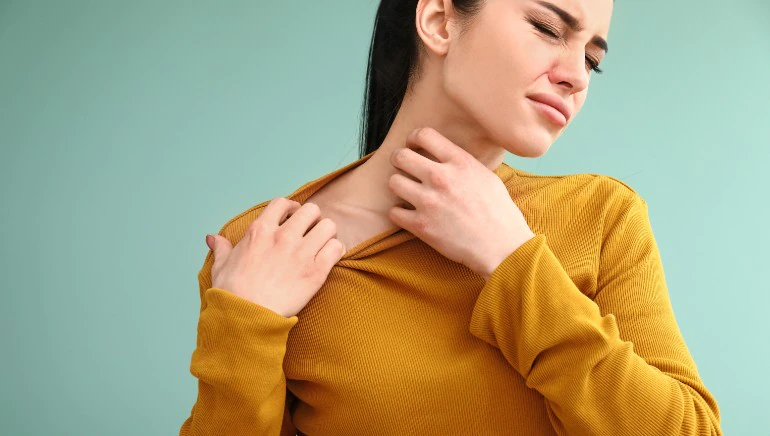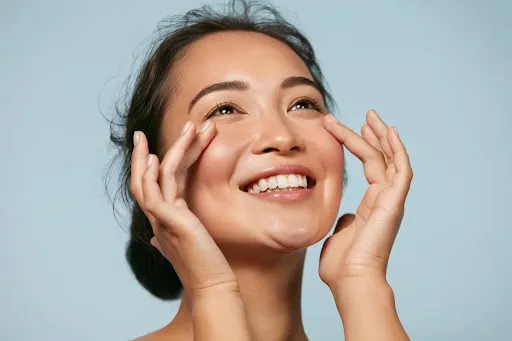When something touches your skin, your immune system believes it is under attack. It overreacts and produces antibodies to aid in the fight against the invader, which is known as an allergen. A red, itchy rash appears where the substance landed. We've put together this "Easy Guide to Treating Skin Allergy" so you can prevent, combat, and cure Sensitive and irritated skin.
 Skin Allergy: Causes and Treatments
Skin Allergy: Causes and Treatments
Definition
Rashes are characterized by changes in the color, feel, or texture of your skin.
Alternative Names
Skin redness or inflammation; Skin lesion; Rubor; Skin rash; Erythema; Skin Allergies; Skin Irritants
Considerations
The appearance and symptoms of a rash can often reveal the cause. Skin testing, such as a biopsy, can also aid in diagnosis. Sometimes the cause of the rash is unknown.
What Causes Skin Allergies?
It takes at least 10 days after your first contact with something to become sensitive to it. You might even be able to touch something for years before becoming allergic to it. Dermatitis, which means skin inflammation, refers to a simple rash.
But once you develop an allergy, you could have a reaction within a few minutes of coming into contact with it. Or it might take a day or two.
The most common causes of skin allergies include:
- Nickel, a metal used in jewelry and snaps on jeans, makeup, lotions, soaps, and shampoos
- Sunscreens and bug sprays
- Medications you put on your skin, like antibiotics or anti-itch creams
- Fragrances
- Cleaning products
- Plants, including poison ivy
- Latex, which is used in stretchy things like plastic gloves, elastic in clothing and balloons
- Chemicals
Seborrheic dermatitis is a rash that appears as red and scaling patches around the brows, eyelids, mouth, nose, trunk, and behind the ears. If it occurs on the scalp, it is known as dandruff in adults and cradle cap in infants.
This harmless but bothersome condition is exacerbated by age, stress, fatigue, weather extremes, oily skin, infrequent shampooing, and alcohol-based lotions.
Other common causes of a rash include:
- Eczema (atopic dermatitis) -- Tends to happen in people with allergies or asthma. The rash is generally red, itchy, and scaly.
- Psoriasis -- Tends to occur as red, scaly, patches over joints and along the scalp. It is sometimes itchy. Fingernails may also be affected.
- Impetigo -- Common in children, this infection is from bacteria that live in the top layers of the skin. It appears as red sores that turn into blisters, ooze, then for a honey-colored crust over.
- Shingles -- A painful blistered skin condition caused by the same virus as chickenpox. The virus can lie dormant in your body for many years and re-emerge as shingles. It usually affects only one side of the body.
- Childhood illnesses such as chickenpox, measles, roseola, rubella, hand-foot-mouth disease, fifth disease, and scarlet fever.
- Medicines and insect bites or stings.
Many medical conditions can cause a rash as well. These include:
- Lupus erythematosus (an immune system disease)
- Rheumatoid arthritis, especially the juvenile type
- Kawasaki disease (inflammation of the blood vessels)
- Certain body-wide (systemic) viral, bacterial or fungal infections
Home Care (How You Can Treat Skin Allergy at Home)
The majority of simple rashes will improve with gentle skin care and avoidance of irritating substances. Follow the following general guidelines:
- Avoid scrubbing your skin
- Use gentle cleansers
- Avoid applying cosmetic lotions or ointments directly on the rash.
- Use warm (not hot) water for cleaning. Pat dry, don't rub.
- Stop using any recently added cosmetics or lotions.
- Leave the affected area exposed to the air as much as possible.
- Try calamine medicated lotion for poison ivy, oak, or sumac, as well as for other types of contact dermatitis.
Hydrocortisone cream (1%) is available without a prescription and may soothe many rashes. Stronger cortisone creams are available with a prescription. If you have eczema, apply moisturizers over your skin. Try oatmeal bath products, available at drugstores, to relieve symptoms of eczema or psoriasis. Oral antihistamines may help relieve itchy skin.
When to Contact a Medical Professional
Call 911 or the local emergency number if:
- You are short of breath, your throat is tight, or your face is swollen
- Your child has a purple rash that looks like a bruise
Call your health care provider if:
- You have joint pain, fever, or a sore throat
- You have streaks of redness, swelling, or very tender areas as these may indicate an infection
- You are taking a new medicine -- DO NOT change or stop any of your medicines without talking to your provider
- You may have a tick bite
- Home treatment doesn't work, or your symptoms get worse
What to Expect at Your Office Visit
Your provider will examine you and ask about your medical history and symptoms. Questions could include:
- When did the rash begin?
- What parts of your body are affected?
- Does anything make the rash better? Worse?
- Have you used any new soaps, detergents, lotions, or cosmetics recently?
- Have you been in any wooded areas recently?
- Have you noticed a tick or insect bite?
- Have you had any change in your medicines?
- Have you eaten anything unusual?
- Do you have any other symptoms, like itching or scaling?
- What medical problems do you have, such as asthma or allergies?
- Have you recently traveled out of the area where you live?
Tests may include:
- Allergy testing
- Blood tests
- Skin biopsy
- Skin scrapings
Medicated creams or lotions, oral medications, or skin surgery may be used to treat your rash, depending on the cause.
Many primary care providers are familiar with common rashes. A dermatologist may be necessary for more complicated skin disorders.
You may see these sources as reference, for more info:
James WD, Elston DM, Treat JR, Rosenbach MA, Neuhaus IM. Cutaneous signs and diagnosis. In: James WD, Elston DM, Treat JR, Rosenbach MA, Neuhaus IM, eds. Andrews' Diseases of the Skin. 13th ed. Philadelphia, PA: Elsevier; 2020:chap 2.
Ko CJ. Approach to skin diseases. In: Goldman L, Schafer AI, eds. Goldman-Cecil Medicine. 26th ed. Philadelphia, PA: Elsevier; 2020:chap 407.
Our Spa’s Natural Treatments
There are excellent solutions for your skin's requirements available here. Hydro Dermabrasion (including Hydrafacial steps as well as moisturizing face skin), Cleansing and Facial massage + Lifting + Steaming could be the solution to your skin problems.
The Mediterranean-Beauty Day Spa will greet you with a complimentary consultation and skin analysis system. Following the identification of your condition, you will be served with the best quality services suitable for your face skin. Some cases, however, require medical or dermatologist attention and are not our part of the role.
 Our Spa’s Natural Treatments
Our Spa’s Natural Treatments
After Easy Guide to Treat Skin Allergy, wherever you live in the Columbus, Ohio areas like Riverlea, Minerva Park, Huber Ridge, Clintonville, Crosswoods, Brookside Woods and Dublin.
Call us for Magnificent Results!
Glow and Shine Gorgeously!
(614) 940-0886